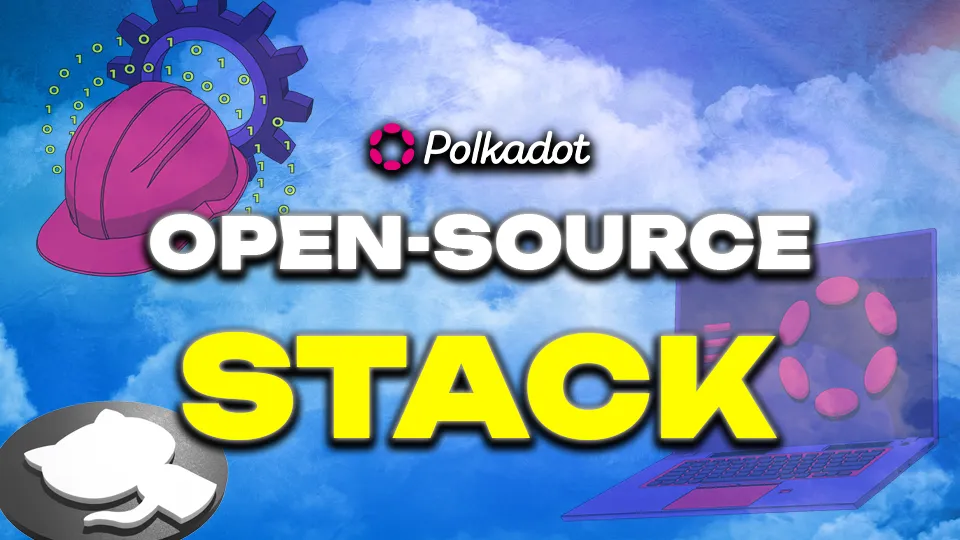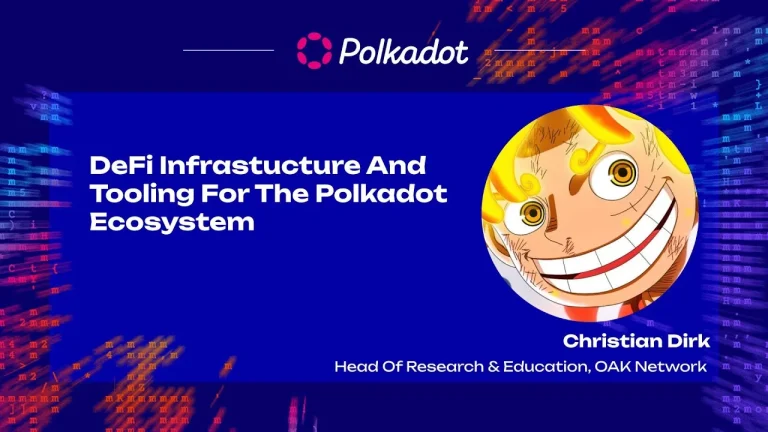As an open-source blockchain platform, Polkadot is designed to facilitate the interoperability of multiple blockchains within a unified network, making it an essential component of the Web 3.0 ecosystem. This article serves as an extended guide to the Open Source Polkadot Stack, detailing its architecture, components, and tools that developers can leverage to build decentralized applications (DApps) and other blockchain-based projects.
The Foundation of the Polkadot Tech Stack
The Polkadot Tech Stack is a collection of open-source technologies that form the backbone of the Polkadot ecosystem. It is a subset of the broader Web 3.0 Tech Stack, which encompasses a wide range of tools, languages, and protocols contributing to the decentralized web. The Polkadot Stack is specifically designed to support DApp development across various verticals, including decentralized finance (DeFi), gaming, supply chain management, and more.
Polkadot’s architecture is layered, allowing for modular development and the integration of various components that can interact seamlessly. These layers include the base blockchain layer, middleware, and application layers, each serving a distinct function in the development process.
Key Components of the Polkadot Stack
1. Polkadot Wallets
Wallets are a critical component of the Polkadot ecosystem, providing users with the ability to manage their assets, participate in governance, and interact with DApps. The Polkadot Stack includes a variety of wallet types, each tailored to different use cases:
- Web Wallets: Web wallets like Multix, Polkasafe, and polkadot-js/apps offer user-friendly interfaces for managing assets and interacting with the Polkadot network.
- Desktop Wallets: For more advanced users, desktop wallets such as nova-spektr provide enhanced security and enterprise-grade features.
- Browser Extensions: Browser extensions like Talisman-Extension and SubWallet-Extension offer seamless integration with web browsers, allowing users to interact with DApps directly from their browsers.
- Mobile Wallets: Mobile wallets like Nova Wallet (iOS and Android) and Fearless Wallet cater to users who prefer managing their assets on the go.
- Hardware Wallets: For maximum security, hardware wallets like Ledger provide cold storage solutions for Polkadot and Kusama tokens.
2. Polkadot User Interface
The user interface (UI) layer of the Polkadot Stack includes tools and dashboards that enable users and developers to interact with the Polkadot network:
- Block Explorers: Tools like Statescan and Subscan provide detailed insights into transactions, block production, and network health.
- Validator Dashboards: Platforms like Polkadot Telemetry and Cyclops offer real-time monitoring of validator performance, crucial for network security and stability.
- Governance Dashboards: Tools such as Polkadot Delegation Dashboard and dotreasury facilitate participation in Polkadot’s governance processes, allowing users to vote on proposals and track treasury spending.
- NFT Explorer: The NFT Explorer for Kusama and Polkadot enables users to explore and manage their non-fungible tokens (NFTs) on the Polkadot network.
3. Polkadot Tools, APIs, and Languages
The Polkadot Stack provides a robust set of tools, APIs, and programming languages that empower developers to build, test, and deploy their applications:
- Runtime/Parachain Frameworks: Polkadot Blockchain SDK and Gosemble are essential frameworks for creating custom parachains and runtime modules.
- Client Libraries: Developers can leverage client libraries in various programming languages, including Polkadot API – Typescript, Go, Rust, and Python, to interact with the Polkadot network programmatically.
- Smart Contract Languages: Polkadot supports several smart contract languages, with ink! being the most prominent for Rust developers. Solang and pallet-move are other notable languages that cater to Solidity and Move developers, respectively.
- Testing and Benchmarking: Tools like Zombienet, Polkadot Launch, Chopsticks and Benchmarking CLI enable developers to test and benchmark their applications under various conditions.
4. ink! Smart Contracts
ink! is Polkadot’s flagship smart contract language, designed specifically for the Substrate framework. It offers a Rust-based environment for developing efficient and secure smart contracts on the Polkadot network:
- Core Libraries: The ink! library, along with cargo-contract and pallet-contracts, form the foundation of ink! smart contract development.
- Smart Contract Development: Tools like SmartBeaver and OpenBrush provide additional functionality and templates for ink! developers.
- Security and Testing: The ink! Waterfall and Inkscope Fuzzer tools offer security testing and fuzzing capabilities to ensure the robustness of smart contracts.
5. Polkadot Chains and Pallets
Polkadot’s modular architecture allows for the creation of custom chains (parachains) and runtime modules (pallets) that can be tailored to specific use cases:
- Scalable Transactions: Parachains like Astar focus on providing scalable and efficient transaction processing for DeFi and other applications.
- Bridges: Interoperability is a key feature of Polkadot, with projects like interBTC and Darwinia developing bridges that connect Polkadot with other blockchain networks like Bitcoin and Ethereum.
- Privacy and ZKP: Privacy-focused chains like Phala Network and zero-knowledge proof (ZKP) projects such as PLONK for Substrate enhance the security and privacy of transactions on the Polkadot network.
6. Polkadot Host and Network Maintenance Tools
The host layer of the Polkadot Stack includes the core technologies that power the Polkadot network, as well as tools for maintaining and optimizing network performance:
- Rust and C++ Hosts: The Substrate and Kagome hosts provide the foundational infrastructure for running Polkadot nodes and parachains.
- Light Clients: Tools like smoldot and Substrate Connect enable lightweight, decentralized access to the Polkadot network, reducing the need for full nodes.
- Network Maintenance: Validator setup tools such as Polkadot Validation Node Ansible Setup and monitoring platforms like ONE-T and SubVT ensure that the Polkadot network remains secure, stable, and performant.
7. Polkadot Signatures, Consensus, and Networking
At the core of Polkadot’s security model are its signature schemes, consensus mechanisms, and networking protocols:
- SR25519 Signatures: The SR25519 signature scheme, which is based on Schnorr signatures, provides robust security for Polkadot transactions.
- Consensus Mechanisms: Polkadot employs a hybrid consensus model, combining BABE for block production and GRANDPA for finality. This approach ensures both fast block times and strong finality guarantees.
- Networking: Polkadot’s networking layer is powered by the libp2p framework, which facilitates peer-to-peer communication and decentralized network maintenance.
Conclusion
The Open Source Polkadot Stack represents a comprehensive and versatile set of tools, frameworks, and protocols that empower developers to build cutting-edge decentralized applications across a wide range of industries. From wallets and user interfaces to runtime frameworks and smart contract languages, the Polkadot Stack offers everything needed to create secure, scalable, and interoperable blockchain solutions.
As the Polkadot ecosystem continues to evolve, new tools and projects will undoubtedly emerge, further enriching the capabilities of the Polkadot Stack. Developers are encouraged to explore these resources, contribute to the ongoing development of the stack, and help shape the future of the decentralized web.
For more information on each component of the Polkadot Stack, please visit the respective GitHub repositories linked throughout this article. Remember to always do thorough research before incorporating any open-source tool into your projects to ensure the security and reliability of your applications.








